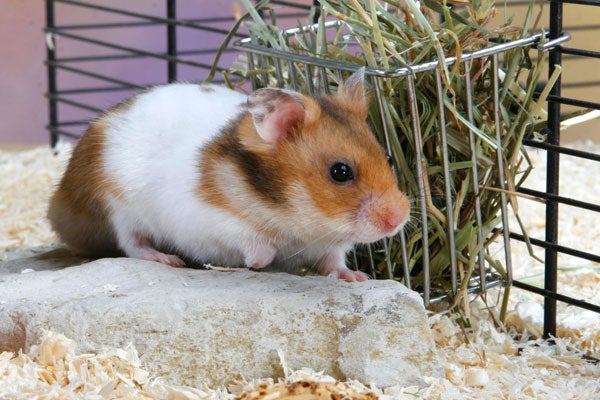Pet of the week: The Syrian hamster

Undeniably cute with his twitchy whiskers, pouchy cheeks and shining eyes, it's easy to see how the hamster has snuggled his way to our hearts. Unlike Mickey Mouse or Bugs Bunny, the hamster has never needed an animated alter-ego equivalent to do the talking for him. Not unless you count Richard Hammond...
Cheek to cheek
As the name suggests, this week's little creature is from the desert, and therefore genetically engineered to deal with hardship. So when nibbles come along, where better to store those insects and seeds than in his fur-lined cheek pouches? (It's slow carb energy release, hamster-style.)
By a whisker
As a nocturnal creature, the hamster is used to hunting in the dark, and he uses his whiskers to find his way. They are curious, active little chaps, and should not be caged up all the time but allowed to explore as they would in their natural habitat. Not, however, if you have a cat in the house...
All by myself
Hamsters are solitary animals and should not share cages (unless you are breeding), as this will lead to fighting, and could significantly lower their two-year life-span. For more information about hamsters and to get in touch with specialist breeders, visit southernhamsterclub.co.uk/new/.
Nibbles, anyone?
As an omnivore, the hamster will eat most things, but that doesn't mean feeding him all your leftovers. A little cooked chicken every now and then can supplement his diet of fresh veg (broccoli, carrots) and fruit (apples, pears), but NO citrus fruit as it tends to upset his delicate stomach.
Softly softly
Hamsters have coats of many colours, but the sandy variety is the most popular. Longhairs can grow their mane up to four inches long (not bad on a creature that's only six inches long), but need twice-weekly grooming.
A roll on the hay
Bedding is important for the hamster and should be made up of shredded paper, as they like to make their nests with a pliable material. You can also use hay, as they will gladly eat their bedding. Their cages should be as big as you can afford, as they are active and like to play in their tunnels and burn off energy.
Join our commenting forum
Join thought-provoking conversations, follow other Independent readers and see their replies
Comments